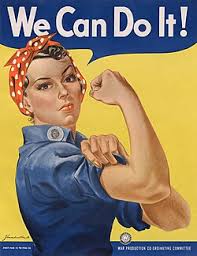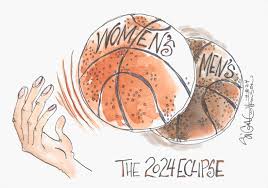1
Section One: The Fundamentals
A) What do we know about sport? What are common assumptions we make about sport and society?
| Sports support character building in children, youth and adults in many of ways. Playing sports helps build discipline and a strong work ethic from a young age. This often translates to adulthood for success later on in life. Being a part of a team environment can promote teamwork and collaboration. These are skills needed to work alongside others in the workplace. Being enrolled in sports helps build respect for others and a sense of resilience in the face of loss. This is crucial to navigating life challenges. These are just a few of the character-building traits that may develop from playing sports, but this may not be true for all. When playing sports, some children may feel pressured by parents or in competitive environments to succeed. Inequalities such as limited playing time or exclusion from play by peers may also contribute to a negative experience. Without positive role models, the transfer of life skills may also be limited depending on relationships with coaches. |
Exercise 3: Notebook prompt
What are some other metanarratives about sport that you are familiar with? Find an image or video clip or draw something yourself that captures this idea…
So what? Why does any of this matter? Does it matter? As something we grow up with – live with – play through – we don’t often interrogate the meanings of sport, and perhaps we don’t want to.
But being aware of these assumptions and metanarratives is especially important, I would argue, because of the centrality of sport to our everyday lives, the role that sport plays in shaping our childhood and worldviews and….. [finish that thought]

One metanarrative that sticks out in my mind is ‘Sport Celebrating National Identity by Country’. A great example of this would the Summer and Winter Olympics. Sports that involve international competition are often divided up by nations. This metanarrative is used as a way to bring people together, demonstrate pride for countries and increase the sense of identity and belonging for all. Being aware of these metanarratives are important when addressing societal challenges such as inequality, stereotypes, inclusivity, and more. ‘Sport Celebrating National Identity by Country’ shares this idea by creating an environment that is welcoming for everyone. This not only supports the athletes competing but also plays a role in shaping perspectives for young people and our opinions on worldview. By bringing different ethnic backgrounds and cultures together promotes understanding, awareness and respect for others around the world. |
B) What is social justice?
Exercise 4: Padlet Prompt
Think back to the last section and try to look at some of the ideas we discussed differently. How might sport and social justice actually co-exist?
Record any images, video clips, or gifs you added to the padlet and identify a point of intersection between sport and social justice (can be an issue or a barrier or a debate or something you would like to explore in more depth in this course) . Screenshot or paste in your response below.

Advocacy and activism play a significant role in sports, helping to overcome challenges such as discrimination and racism across the world. In 1947, an African American player by the name of Jackie Robinson broke the colour barrier in Major League Baseball when making his debut for the Brooklyn Dodgers. At the beginning of his career, Robinson was dehumanized and treated poorly due to the colour of his skin. His consistent battle to show up and be courageous earned the respect from those who watched him play. Robinsons resilience not only helped him overcome personal challenges but lead the way for racial integration into professional sports. His prominent figure continues to linger and his legacy will never be forgotten. |
C) Social Justice Reading
(note: this activity is optional!)
D) KINESIOLOGY AND SOCIAL JUSTICE
Exercise 5:
Exercise 6:
What are the implications of bodies-at-risk discourse and the refusal to understand the health gap from a social justice perspective, according to the authors of this article?
| The article ‘Social Justice in Kinesiology, Health, and Disability’ takes a social justice perspective into learning and understanding the future of social justice research in this fieldwork. In terms of the bodies at risk discourse, the social justice perspective neglects to understand the health gap in many of ways. The main implication noticed was that the social justice perspective views limited achievement and deficits in marginalized groups as a racial or discriminatory issue. This is due to how mainstream social justice perspectives view children, youth and adults from different ethnic backgrounds. It also notes that individuals with disabilities and families living in poverty are susceptible to health inequalities and physical activity due to oppression. An equitable solution to this problem is to conduct the proper research to ensure that health disparities and racial assimilation does not occur for people of marginalized communities. This will ensure that all people are treated with equity and respect no matter their race, culture or background. |
Section Two: Sport Feminism
Exercise 7: Notebook Prompt
What is feminism? What does it mean to you? Choose one of the images below and explain how it captures your understanding of feminism (or find one that does speak to you and paste this into your pressbook with an explanation of why it matters to you.

Feminism is a topic that typically focuses on advocating gender equality for women. In my opinion, it is about advocating for equal access to resources to create fairness without discrimination. I have chosen this photo because I believe it is used as a tool to empower women and their movement to be treated equally within society. Over the years, women have faced discrimination in regards to legal rights, gender roles, education and more. This has impacted women by giving them limited opportunity and lack of social and cultural limitations that ultimately has impacted their health. This photo is used as a reminder to the embrace women’s strengths and to continuing advocating for the overall goal of gender equality. |
Exercise 8: Notes Prompt (optional)
NB: Cornell notes is a great resource that teaches effective notetaking. Unfortunately, our system can’t save notes taken in the H5P app, so this is fully optional.
Exercise 9: Crossword Activity
Exercise 10: Padlet Prompt
| Word Cloud
The words I chose for my word cloud are interconnected concepts that impact and relate to the topic of feminism. These words unify the work that needs to be done in terms of feminism and social justice that can promote equality within society. |

| I believe the landscape is changing for women’s sports because of the ongoing battle to advocate for gender equality. In the United States, the WNBA which was founded in 1996 serves as a platform for female professional basketball players to play competitively against one another. In 2023, the PWHL was created to provide women the opportunity to play in a competitive hockey league that is based out of North America. Both of these leagues were developed to provide women the opportunity to play professional sports for money. Although these leagues are turning into a great success, there are still many huge gaps between men’s professional sports and women. These gaps are in relation to total viewers, players’ salaries and endorsements and the limited access to proper resources. With continued effort to advocate for women’s sport, we will one day be able to say that equality has been achieved.
|

